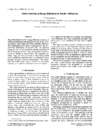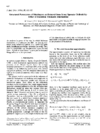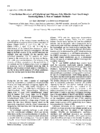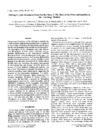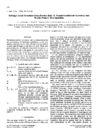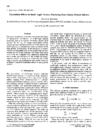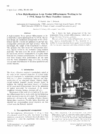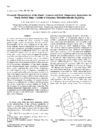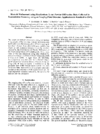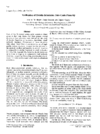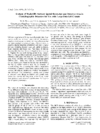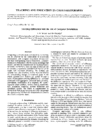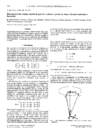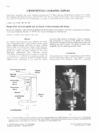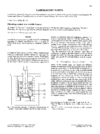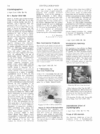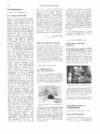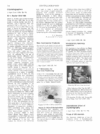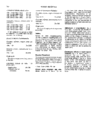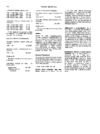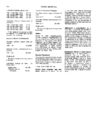issue contents
December 1996 issue

Cover illustration: Neutron scattering pattern in the (hk0) reciprocal-lattice plane from alpha-AgI at 520 K. The portion shown extends from 0 to 5.4 reciprocal-lattice units in both h and k. Courtesy of D. A. Keen, V. M. Nield and R. L. McGreevy.
research papers
The instrument function for energy-dispersive and angular- dispersive powder diffraction is presented.
The profile function of the Bragg reflection composed of the contributions of the apparent crystallite size and shape, of the anisotropic strain and of the instrument function is presented.
Thickness fluctuations in multilayers are shown to induce a strong diffuse term in grazing-incidence X-ray reflectivity (GIXR) patterns. Neglect of this effect causes alteration of average roughness and thickness values, derived by fitting of an ideal superlattice to the actual multilayer.
A Commercial Scanner Applied as a Microdensitometer for Gas Electron-Diffraction Photographic Plates
A commercial Agfa Arcus II scanner is found to be applicable for the photometry of gas electron-diffraction photographic plates.
The application of the indirect Fourier transformation and the square-root deconvolution procedure for a determination of the cross-section structure of cylindrical and polymer-like micelles is investigated using simulated small-angle scattering data.
The mean orientation of a cloud of individual orientations measured by EBSP (electron back-scattering patterns) is defined on the basis of quaternion algebra and illustrated on a phase- transformation problem in Ti alloys.
The two-stage method for crystal structure solution and analysis from powder data is analysed. The basic lines of a new approach are proposed.
The pseudotranslational symmetry is used as prior information in the powder-pattern decomposition process.
A computer simulation of correlation effects in small-angle scattering is presented.
A new design is presented for a low-temperature sample environment compatible with the high resolution encountered at synchrotron beamlines. Its performance has been demonstrated in magnetic X-ray scattering experiments.
The performance of a high-resolution X-ray powder diffractometer working in the 3–470 K range is described. The high level of accuracy in peak position (to within 0.002°) and very good angular sensitivity (~10-4 °K−1) and an equal resolution in the whole range of temperature allow very accurate determination of the lattice parameters and crystal structure.
Ultrasonic measurements of the temperature-dependent elastic constants of potassium tetrachlorozincate are presented. An unusual temperature dependence of the C13 component reflects the onset of a soft mode prior to the onset of a ferroelectric-to- incommensurate phase transition.
The Rietveld refinement of powder data of standard m-ZrO2 collected with a new imaging-plate technique is presented.
Planarity of side chains in protein structures, compared with small-molecule database results.
Calculations show that, over a large range of cell size, Bragg resolution and X-ray beam width, a single 92 mm diameter micro- channel-plate (MCP) detector outperforms an array of four 256 × 256 mm multiwire proportional chambers. The advantages of the MCP detector are greatest at large cell size, high Bragg resolution and small beam width.
teaching and education
Free 

A course on diffraction is presented that uses computer simulations of structures and their Fourier transforms for effective teaching.
Free 

A generalized form of a symmetry operator has been derived by vector and matrix formalism. Typical applications of the formula are also provided.
cryocrystallography papers
A device allowing protein crystals to be prescreened in house for diffraction quality and merging statistics before data collection at a synchrotron-radiation facility is presented.
computer programs
The program RFLEXPL allows one to obtain cross-validated estimates for phase errors in structure factors calculated from an atomic model. It creates a file of structure factors in X-PLOR format that contains the information necessary to calculate weighted maps.
laboratory notes
A model of an air cooler in a crucible furnace for simultaneous regulation of different crystallization rates in a series of Tammann test tubes with the purpose of obtaining crystals is presented.
crystallographers
Free 

new commercial products
Free 

international union of crystallography
Free 

books received
Free 

Free 

Free 



 journal menu
journal menu










